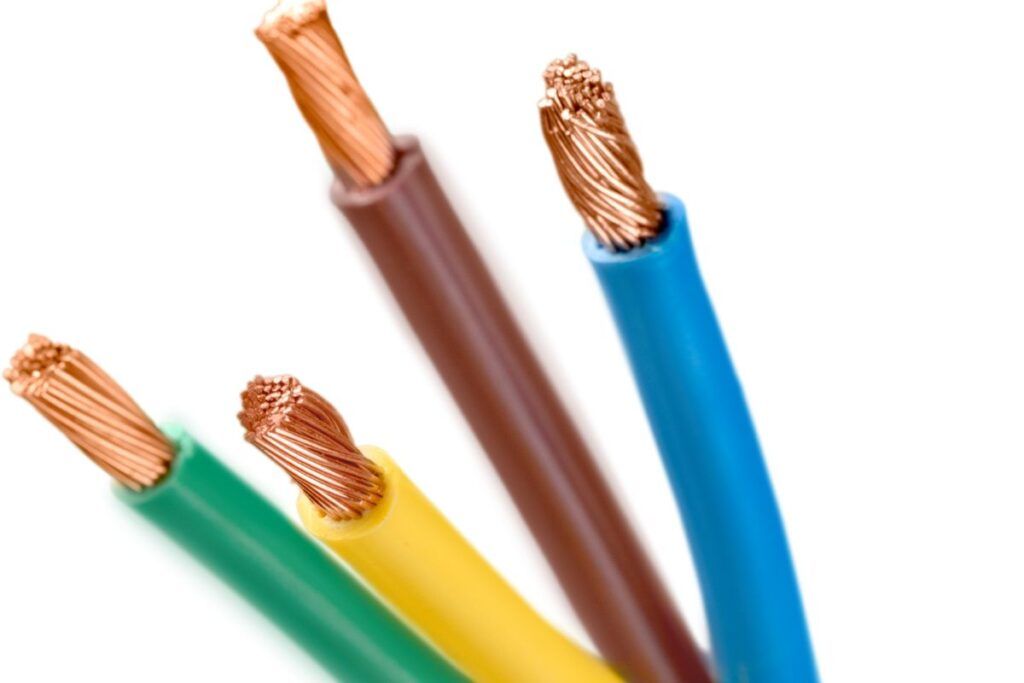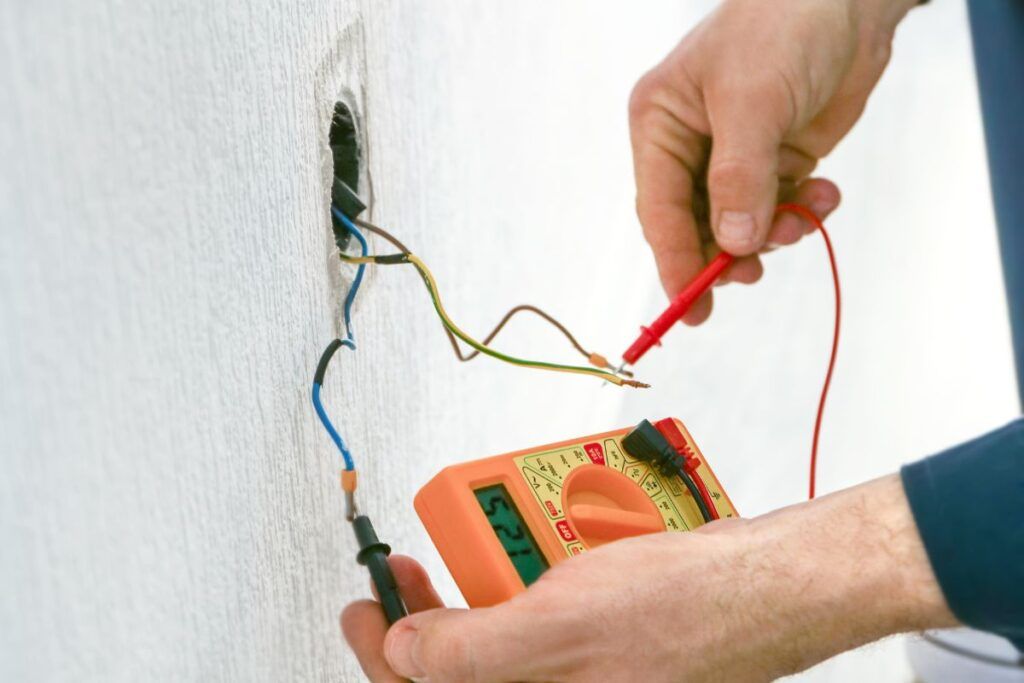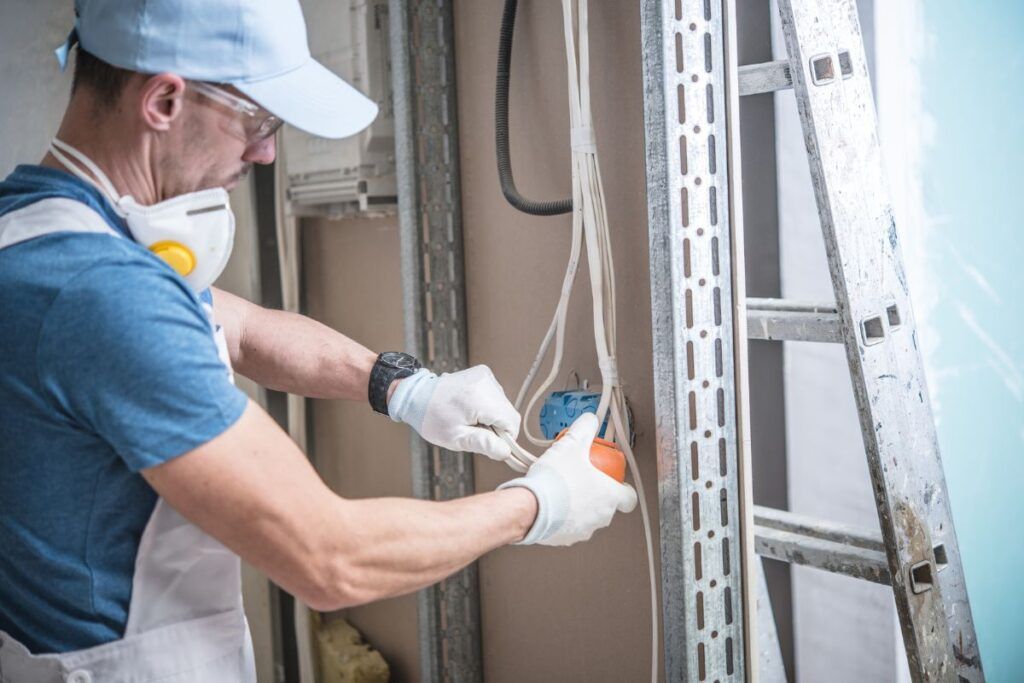When deciding on the wire gauges, you should know that the lower ones are better than the higher ones. For example, a 10 gauge wire is better than a 12 gauge wire. Today, we will discuss the amp capacity of the 10 gauge wires.
Generally, a 10 gauge wire is ideal for handling up to 30 Amps of load at 140°F. You can also use the wire for 35 amps, provided you allow the wire to carry only 80% of the circuit load and not more than that. However, it is recommended to always stay within the maximum load capacity of 30 Amps.
While running a 10 gauge wire, you should keep certain things in mind. This article will give you detailed information about the amp capacity of 10 gauge wires, factors to consider, and the usages of 10 gauge wires.

Check out our list of top-handpicked products for all your electrical, appliance, and HVAC system needs to keep your home running smoothly.
This post includes some affiliate links.How many amps can a 10 gauge wire handle?
Generally, a 10 gauge wire will safely handle up to 30 amps without overloading and maintaining the 80% rule.
The wire should not exceed 80% of the rated load.
If that happens, a wire gets overheated and starts melting.
Using a 10 gauge wire in a circuit or appliance holding 30 amps will allow the current to flow smoothly without any interruption or heating.
However, you may wire the same wire for some other amps.
Can I use a 10 gauge wire for 20 amps?
You can even use these wires for lower amps, like 20 or 25, provided the lower amps can carry the upsize wires.
Some circuits can handle an upsize wire because of the wire material.
Aluminum is not as good as copper.
So, when you use aluminum, you have to use a higher gauge wire.
For example, if you use a 10 gauge copper wire for a circuit, you might have to use an 8 gauge aluminum wire for the same circuit.
However, you must spend more money on an 8-gauge aluminum wire.
Can I use a 12 gauge wire for 35 amps?
Generally, 30 amps is the best ampacity designed for 10 gauge wires.
You can also use the same wire for 35 amps, provided you follow certain considerations:
- Copper wires carry enough current loads without overheating. A 10 gauge wire will carry 35 amps at a temperature of 167°F. Aluminum can also carry 35 amps at a temperature rating of 203°F.
- Following the 80% rule, 35 amps will use only 28 amps of the current. So, if a 10 gauge wire can handle 30 amps, it will also handle a 35 amp circuit or appliance.
- If you want to use the 10 gauge wire for 35 amps, you can run it for only 50 feet and not more than that.
Can I use a 10 gauge wire for 40 amps?
A 10 gauge wire is not rated for 40 amps.
It is only made for 30 amps and, in some conditions, 35 amps.
However, you can still use the wire for 40 amps.
But, the wire will start heating up, and after an extended period, the wire will melt, burn, and start a fire.
A 40 amp circuit uses an excessive amount of currents which becomes impossible for the wire to handle.
You can use a copper wire for some time, but 10 gauge aluminum wires are not safe for 40 amps.
Main factors determining the amp for 10 gauge wire
Several factors require consideration while deciding the wire gauge size.
Wire material
Out of so many materials, the commonly used wires are:
- Copper
- Aluminum
- Copper-clad aluminum
Copper wires have high conductivity, durability, and flexibility.
They can carry loads of currents without overheating.
Copper wires are malleable, which eliminates the risk of breakage.
On the contrary, aluminum wires are poor in conductivity.
They cannot carry the same current loads as the copper wires.
Besides, aluminum wires contract and expand, thus interrupting the current flow.
But aluminum is easy to work with and manage, unlike copper wires.
Aluminum is also cheaper than copper wires.
If you want to replicate the copper wires, you need a wire size double the size of copper.
Copper-clad aluminum wires have a copper fitting, giving the wire some copper benefits.
They are better than pure aluminum but not as good as pure copper.
So, you can have this upgraded version of aluminum.
Copper-clad is cheaper than copper but more expensive than pure aluminum.
A 10 gauge copper wire can handle 30 amps without any issues.
Despite such differences, even a 10 gauge aluminum wire is designed to carry the same load as copper.
Both 10 gauge copper and aluminum wires can handle 30 amps.
Temperature rating
Temperature rating and wire material are closely related.
Generally, the rated load of the wire should not exceed 80%.
Remember, you should use the 10 gauge wires for certain amps.
A 10 gauge wire will have the following temperature ratings at different amps:
- 140°F at 30 amps
- 167°F at 35 amps
- 203°F at 40 amps
If you use aluminum or copper-clad wires, a 10 gauge can have:
- 140°F at 25 amps
- 167°F at 30 amps
- 203°F 35 amps
The rule is to use the 10 gauge wires in 30 amp loads.
As you can see, the wire temperature can exceed 200°F if you use a higher amp.
If you increase the amp, the temperature rating of the wire will also increase.
If that happens, the wire may overheat and melt the insulation.
Wire insulation

Several types of insulation are used for specific appliances if the temperature exceeds too much.
If the wire temperature reaches 194°F or less, you can try:
- Polyethylene
- Neoprene
- Polyurethane
- Polyvinyl Chloride
- Polypropylene
- Polyethylene
If the wire temperature reaches 257°F or less, try the following:
- Polyvinyl Chloride
- PVC irradiated Nylon
- Kynar Polyethylene
- Thermoplastic Elastomers
If the wire temperature reaches 392°F or less, try the following wire insulations:
- Kapton
- PTFE
- FEB
- PFA
- Silicone
Sometimes, you might use a 10 gauge wire in a 40 amp circuit or applications.
In such cases, it has to be naked wiring that cannot melt the wire insulation.
Other factors to consider while using 10 gauge wires
While using a 10 gauge wire, you must keep certain things in mind.
Do not use the 10 gauge wire for more than 30 amps.
Generally, a 10 gauge wire will carry 30 amps at its best.
The wire doesn’t overheat or melt.
But, the wire can also tolerate a little more amps, like 35 amps.
You can also use the wire in higher amps at your own risk.
Installing a 10 gauge wire in 40 or 50 amps will ultimately melt the wires.
If you wish to run applications and circuits that carry more than 30 amps, you should use a low-gauge wire, like a 6 or 8-gauge wire.
Check the temperature and wire insulation.
Homeowners only concentrate on the wire gauge but avoid the temperature rating and insulation.
They are inexperienced and do not have any idea about these things.
These factors highly affect the wire’s capacity to carry current.
Thin wires have a big drawback, and that is overheating. A thin wire will overheat faster than a thicker wire. Such wires will melt and start a fire.
That is why it is essential to use the right size of wire.
If you have 30 amps, the best kind of wire would be a 10 gauge wire.
A higher temperature rating in a 10 gauge wire to tolerate more than 30 amps because the wire has good resistance.
The thickness can be the same, but the temperature and insulation can make a difference.
Voltage drop

Voltage drop is an issue when the resistance increases so much that the other end of the wire fails to get enough current to flow.
Voltage drop increases the wire length.
It can stop the appliances from working and burn with their motors.
Despite such issues, if the appliances are forced to work, the appliances will trip, and you can receive a short circuit.
So, think before you use 10 gauge wires for higher amps.
Voltage drop depends on the amp, distance, and wire gauge.
If you run a 10 gauge copper wire in 15 amps, the maximum voltage drop will be 3% at 100 feet.
A 30 amp will feel it can carry a lot of currents.
But, if you use multiple appliances on it, 30 amps are not enough.
A table saw alone will have a 16 amp load.
Wire length
Generally, the 10 gauge wires are designed for 30 amps.
But you can use it for 40 amps if the wire is short.
Short wires have less resistance and lower voltage drop.
So, there are no chances of overheating.
But, if a longer wire is required, you need a lower number gauge.
Environment
When fixing wire gauges to appliances or circuits, the environment is a great concern.
It would be best to understand the temperature of the surrounding atmosphere.
Indeed a 10 gauge wire will handle 30 amps, but what if the surrounding temperature is very hot?
What if the wires are behind a wall where the heat fails to evaporate?
Suppose the temperature is very hot and the heat around cannot evaporate well.
In that case, you need to choose the 10 gauge wire for appliances using less than 30 amps.
But it won’t be a problem if the wire’s temperature rating is high.
How far can I run a 10 gauge wire?

The distance limitation of a 10 gauge wire depends on single and 3-phases and voltages.
If you wish to run a 10 gauge wire for longer distances, it is better to use copper wires.
If you use aluminum, the distance should not exceed 50 feet.
Running a 10 gauge copper wire in a single phase:
- 55 feet for 120 volts
- 111 feet for 240 volts
- 222 feet for 480 volts
For 3-phase:
- 64 feet at 120 volts
- 128 feet at 240 volts
- 256 feet at 480 volts
The amps will be 30 amps, and the voltage drop should be 3%.
Does distance affect the amp rating?
The distance also affects the rating because a long distance requires long wires.
Along with the wire length, the resistance increases too.
If the resistance increases, the wire will easily overheat and cause fire hazards.
That is why you should use the wires for shorter distances so that the resistance doesn’t increase.
You will sometimes find that heavy-duty appliances like freezers will have short power wires.
Since these appliances draw excessive current, short wires keep the resistance low and prevent overheating.
Where can I use a 10 gauge wire?

Since a 10 gauge wire thickness is around 2.58 mm, you can use it for some heavy-duty appliances.
While selecting the wire size for any appliance, you must consider the appliance’s voltage.
To get the right amp for 10 gauge wire, divide the wattage by the voltage.
If the amp is less than 30 amps, you can use the 10 gauge wires.
But, if it is higher, run a low number gauge.
The appliances where you can use 10 gauge wires are:
- Stoves
- Window AC units
- Dryer units
- Heaters
- Central air conditioning
- Vehicle batteries and alternators
- RV appliances
These are some appliances that use excessive current when they are started.
10 gauge wire wattage
To determine the wattage, you must multiply the amps with the volts.
The wattage will change depending on the amperage and voltage.
So, if your device has 30 amps with 120 volts, the wattage will be 30×12 = 3,600 watts.
If the voltage is 240 volts, the wattage will be 7,200W. At 480 volts, it will be 14,400W.
What does the NEC say about it?
The National Electric Code, or NEC, has already mentioned a table about the different wire gauges for different amperages.
For a 10 gauge wire, they recommend using devices that carry 30 amps and not more than that.
But, if you use 10 gauge wires for multiple devices having amps close to 30, you should opt for higher gauges, like 4 or 6 gauge wires.
However, if you already have separate local codes, you do not have to follow the NEC code.
The local codes have more importance than the NEC.
Final thoughts
The best amp for a 10 gauge wire is 30 amp. It can, however, carry 35 and 40 amps for some time. But, the wires heat up after some time if used at 40 amps.
So, it is better to keep the load within 30 amps.
Several factors require consideration while using a 10 gauge wire for any device carrying 30 amps – material, temperature rating, insulation, length, distance, environment, voltage drop, etc.
You must consider these factors before selecting a wire size.
Data Source: National Electrical Code, NEC Wire Table, Electrical wiring, Home wiring.

